Power Consumption
Idle power consumption on 120V power we saw around 11W idle. We generally assume these nodes will use 9-12W idle so this was directly in the range we would expect. Again, we do see power consumption creep slightly higher over time if dust accumulates in the fan/ heatsink and we had a new unit here. Still directionally this is where we would expect.
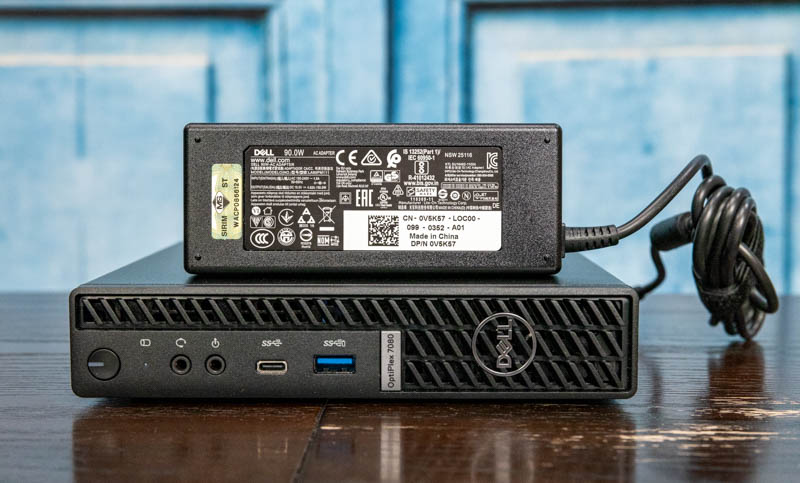
The power supply for this unit is a 90W Dell power adapter from the company’s notebook line. As you would expect, you can use the adapters from the company’s notebooks with this machine. Despite this being a 35W TDP CPU, as with older generation parts, we saw a peak power draw of just over 60W. Clearly, the old 65W power adapters common in this segment for generations are not enough, despite the same CPU TDP being advertised. Once one adds higher-power USB devices, going over 65W of power draw is fairly trivial so the 90W adapter makes sense.
At idle, the system is not silent, but it is very quiet if working from 1M away. Below 60-70% load the noise was acceptable but running at 100% load for extended periods of time will ramp fans. We will quickly note that we have seen/ heard the 65W TDP units and also units with GPUs and one should expect more fan noise with those higher-power options.
Key Lesson Learned for TMM
In this series, we wanted to also focus on some key lessons learned. Since we have already tested well over a dozen different models, we are taking away key pieces of advice from each that we wanted to share.
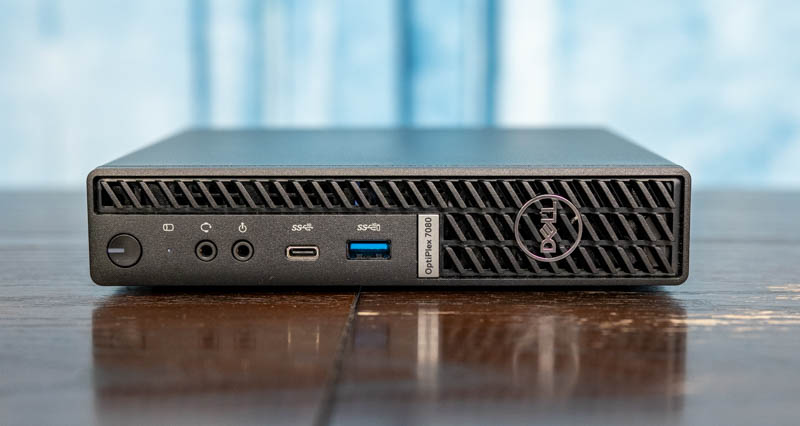
The lesson learned for Project TinyMiniMicro was difficult for this one. There were two key takeaways. First, in general, Lenovo’s ease of service seems to be better than Dell’s by a good margin. The exceptions may be the Dell SATA data/ power connector which is great and Dell’s easier thumb-screw chassis opening. Aside from that, Lenovo’s units are faster/ easier to service and also have the capability to have a second optional I/O port in the rear on the M90q Tiny. The Dell OptiPlex 7080 Micro is closer to the HP EliteDesk 800 G6 Mini in this generation, but the Lenovo unit feels like it has created separation.
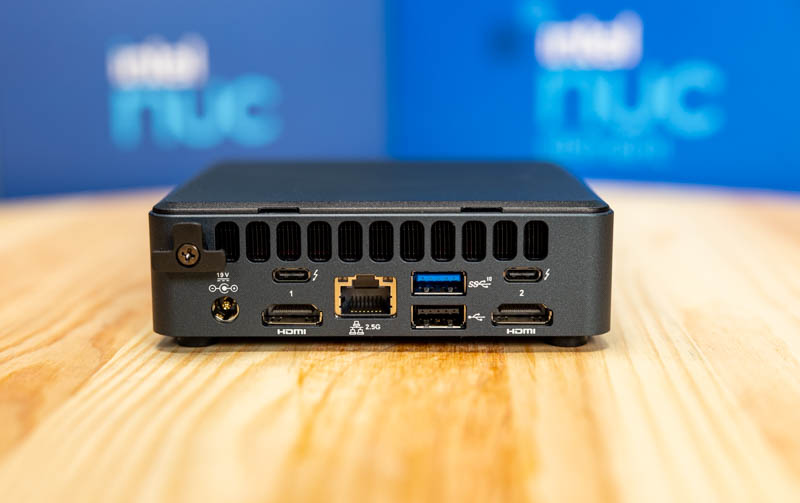
The big takeaway though was in terms of the warranty. This unit was sold with a 3-year on-site warranty. When we compare this to the Intel NUC 11 Pro Review Tiger Canyon NUC11TNKi5 review we did, that is more of a depot warranty. The cost was in the $50-60 range for the extra warranty and to many of our readers that is going to be worth it. To many other readers, it is not a worthwhile upgrade. Still, one has the option on this unit where that may not be an option on devices like the NUCs our solutions outside of the big 3 of Dell, HP, and Lenovo.
We will quickly note for those that are shopping for off-lease Core i5-8500T models, at this price one can get two units with better specs and self-warranty that way. If the Core i7-8700T models drop to a small premium over the Core i5-8500T, then that could offer a way to get similar performance in each machine to what we saw in the Core i5-10500T. This is a major profit center for Dell, but there are some who greatly prefer having that warranty option.
Final Words
When we ordered this unit, we had great expectations. Dell has been in the 1L segment for many generations and seeing a new faceplate made us immediately think that perhaps there had been some sort of revolution inside the system with a new design.
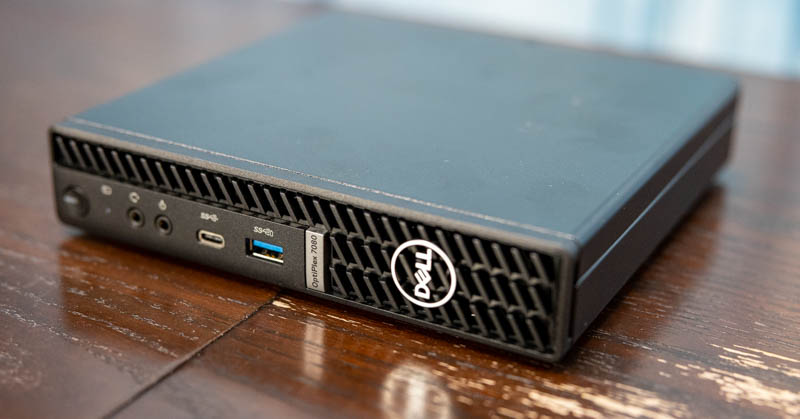
In some ways, we did get a revolution. The Intel Core i5-10500T adds Hyper-Threading for the first time in this segment which contributed to a major performance boost. While Lenovo and HP are more aggressive in using AMD Ryzen Pro chips, one can see the impact of Ryzen in Dell’s systems when one looks at just how much more performance is in this generation.
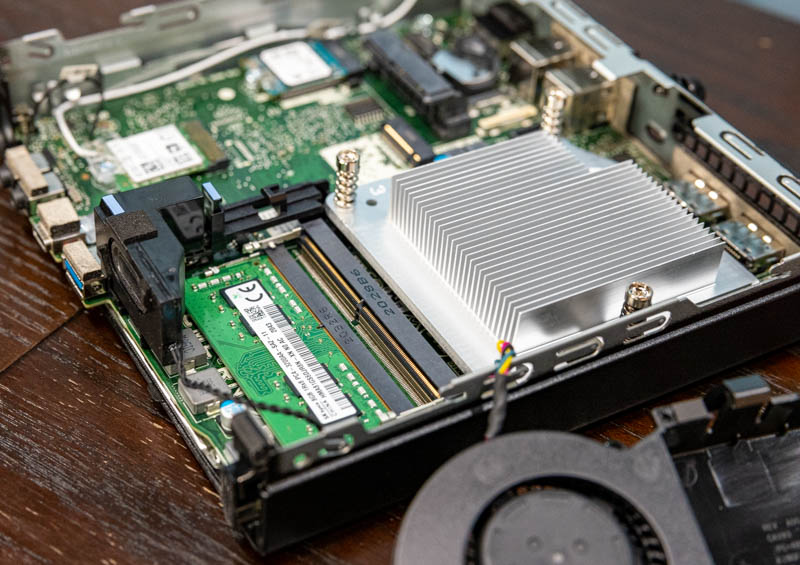
Overall, we think that Dell needs an internal servicing layout at some point. Unfortunately, that was not in this generation. Still, if one wants to get into Project TinyMiniMicro in the Dell OptiPlex ecosystem, then this may be a great unit. We certainly think Dell benefited from a major generational leap in performance.




You compare it a lot with the NUC so instead you should be reviewing the optiple and 7090 ultra which is more like a NUC
Did you guys install ubuntu 18.04 or something more recent? I had to walk back on an itx build because the igpu support for uhd630 is broken on the recent *buntus
Thank you Patrick for a great review of DELL’s minimicro re-fresh.
Thank you for another great review, could you also consider looking at Dell Precision 3240 compact, from what I can see it looks like 2 of these units stacked together. It would be interesting to see if that unit is any better with a 65watt CPU
Optiplex 7080 with onboard graphics is poop as it doesn’t support a third display…
the intel cpu onboard won’t cut it as the shared memmory is not big enought, if you ordered the i7 model it would be enought for 2K Display as daisychained of two and another one so three in total..
the i5 1055T whatever does not have enought power :-/
Is there a serial port add-on option (not a PCIE card, but similar to the link copied below) for the 7080 Micro? Or one made for any of the 3000/5000/7000 series that is compatible with the 7080 Micro? https://www.dell.com/en-us/shop/dell-additional-hdmi-video-port-for-3060-5060-7060-micro/apd/325-bddz/pc-accessories
I have got one of these and want to upgrade the storage. Dell site says it can either support 1 NVMe, 2 NVMe, or 1 SATA with Optane. Has anyone with 7080Micro successfully used 3 SSDs i.e. 2 M.2 NVME and 1 SATA SSD together?